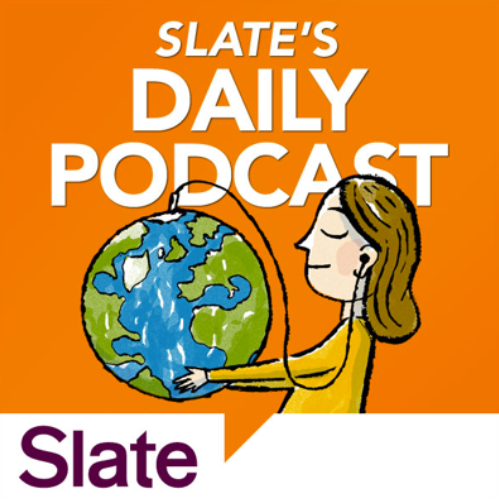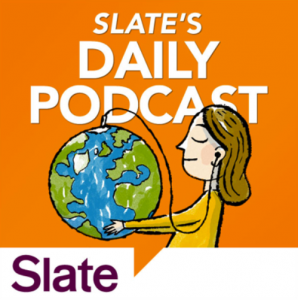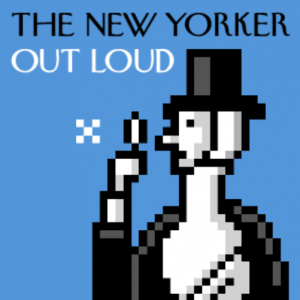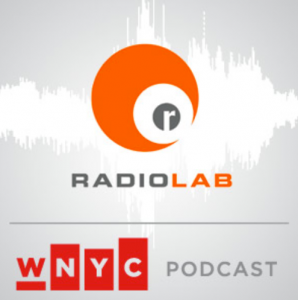Leif Norman photographer
full time arts and culture photographer in Winnipeg Manitoba Canada
What I have learned about Podcasting

How to produce a podcast;

So you have a topic to explore.
The culture of pinball machines in Germany or something like that.
I’m going to assume we are on the same page here, and you are not making a podcast where you crack some beers with friends and yack yack about sports or politics or movies. That type of podcast is relatively easy to produce.
Wait!
Before I get all higgeldy piggeldy I could set out some basic categories of podcasts that I have seen in the wild, and that will make this all much easier.
1: The sit down and talk
Examples:

Slate Political, Sports, Culture Gabfest podcasts.
History Extra.
Mark Kermode and Simon Mayo’s Film Reviews on BBC Radio 5 Live
NPR: It’s all Politics
KCRW Left Right and Centre
These types of podcasts have a little structure to them. Recurring questions, top ten lists, endorsements (This week I like Cheshire Cheese! Everyone go out and buy some cheese)
They are mostly “off the top of the head” affairs where two or three talented, witty, sharp tongued characters get together and gab about current affairs, or simply interview a specialist and ask a few prepared questions.
These are pretty easy to produce with hardly any preparation. The reason they work is because the hosts know each other so well and have a good groove full of in-jokes and running gags that the audience will get seasoned with. It’s like watching Friends, Buffy or The Wire from the very beginning and learning about the characters and the history of the jokes. The baseball game today becomes more momentous if you have been following the Yankees since 1992.
Phil and Phil’s Perfect Ten is a podcast that follows a set structure, like a game, and the fun is in hearing them navigate the intellectual waters.
They are already funny. They just need a jungle gym to swing on and show off.
2: Let’s tell a story
These are like little documentaries where a specific subject is chosen and then chased down. Old and current newspaper clippings are read, phone calls are made, people are interviewed.
This is real journalism. Going out and finding relevant information and important people and telling the story that is being overlooked or ignored.
Saying “Look here! This is amazing and good to know!”

Examples:
The History of the World in 100 Objects
Freakonomics
More or Less; Behind the Stats
Planet Money
This American Life
RadioLab
There is a lot more work to do to make one of these, because one is acting like a journalist going after a specific theme.
Planet Money is a fantastic podcast that makes clear decisions about what story needs to be told about Economics, the Credit Crunch, The Housing Market Collapse, Off Shore Accounts etc… and then carefully and deliberately explore stories and dig up good stuff and share it in a well produced show. This is the type of podcast where people actually learn something. They will probably live long after the podcast has gone out, as opposed to the chit chat current affairs podcast that is quick to make but ages quickly and has a shorter shelf life.

The research needed to produce the BBC Radio Four, British Museum, History of the World in 100 Objects must have been immense and taken months and months before the first podcast was released. The objects needed to be curated, people found and interviewed, scripts written, music written and recorded with different musicians etc… This really is one of the best sounding podcasts out there, but oh! the work!
3: The magazine
Examples:
MacWorld
The New yorker Out Loud
The Economist Podcast
any daily news podcast
They are magazines in audio. A bit of research is done, and there is a chapter like feel to them with narration between, but it’s interview heavy and skip from topic to topic like the articles in a mag. It’s a bit of both 1 and 2.
A bit of research and preproduction goes into the podcast, but it’s mostly collating journalism that has already been done, so it just needs to be chosen and trimmed and talked about.
There is particularly excellent structure, editing and presentation on the New Yorker Out Loud podcast.

The most work,
(but the most interesting type)
I am going to talk about the toughest category to produce; #2, the documentary “Let’s tell a Story” podcast.
First of all; research.
Get books, magazines, papers, data off the internet, anything you can about the topic.
Read Read Read. And find people who know something about it. Talk to them.
You have to prepare like this, because when you are actually in production mode and interviewing people and then editing all the many parts together, you will refer to those little ideas that popped up in the research mode. They will help you decide what order to put things in, and where to go next. Having your head full of seemingly useful and useless info will save your skin when deciding how short to cut an interview in editing, and how long to make the whole thing, because you will have a perspective of the grand story and can make the decision with some confidence.

When interviewing people don’t just let them talk. Of course you have to let them talk a bit because they may say something awesome and unexpected and revelatory, but you also have to get them to say tentpole statements. A tentpole statement holds up the ideas of the section.
They need to say stuff like “This building represents bla bla…” or “and that was the moment I knew I had to bla bla…” or “I was right there in the room with bla bla…” because people will talk around these hard statements without actually saying them. They conversationally know you already know about it; but you don’t.
Remember, the audience knows none of this. So you will feel like an idiot asking them dumb and obvious questions like “Why was it important for you to come here?” The story has to be told and part of telling the story is to lay the foundation, paint the picture, and describe the obvious first.
When I was interviewing a famous architect we talked for over an hour about this and that and walked around one of his buildings and he pointed out numerous little things that were interesting. But the interview was mostly useless for a podcast. I didn’t get him to say any tentpole statements. Overall the interview was interesting, but nowhere in it was a 20 second snippet that could stand alone and prop up the whole piece. I should have asked him “What were you trying to DO with this building design?” or “Why is this building important to late 1960’s design?” Instead he talked about little details beneath a window and what the newspapers said at the time and how the lighting consultant was really cutting edge and how the budget dictated that parts of the building be changed. Conversationally interesting, but to fit into a four minute section of a twenty minute podcast about the building in general, not useful.
I had done research and could engage him with pointed questions about the people and things of the building, but had neglected to direct his focus to specific important people that would be mentioned in the podcast later on. I should have got him to refer to those people so it could be tied together in editing.
So there are some crucial lessons here.
Research is key to knowing about the person or place so you can communicate properly and not sound like an amateur.
Asking questions that encourage them to say clear statements about their actions that really show the audience what they are about.
And asking questions about how they relate to other people in the story, because you need all the characters to connect.
These three things have to work together.
This demands the interviewer/producer have a lot of plates, and to also keep all the plates spinning at once.
(I was going to say that the producer has to have a lot of balls and has to keep those balls in the air all at once, but the metaphor is tortured, and a bit rude.)
When I was making a podcast about the architect and the building I just about forgot to explain why the building was built in the first place. That’s important! So I had to back in time a bit to before the building was built and discovered something neat. The original plan was to have the organization in a totally different spot, and if it had gone ahead, then the face of our city today would have been radically different! People take for granted what exists around them.
For example; 150 years ago, Selkirk was supposed to be the capital of Manitoba. Wow! Can you imagine that alternative future?
Einstein wanted to be a violin player and as a child was thought to be a bit dumb.
The captain of the Titanic was allegedly trying to set a speed record crossing from Southampton to New York. Did this have something to do with the iceberg collision?
If you were interviewing Christopher Columbus before he went across the Atlantic Ocean, you would be a fool to not explain the larger motives at work.
You couldn’t just say “Wow Chris! That’s a big boat you have there!
Did you bring enough biscuits?”
Don’t bury the lead!* Let the listener know what’s what right away and why the action is important.
He is sailing west from Spain across the ocean. Why?
Because he wants to find a shorter route to the far east. Why?
Because that is where the expensive and important spices are.
Ah! Spices!
There’s an angle to chase.
Europeans want those spices.
The Spice Trade is economically important so it would be a good idea to find the quickest route to get them.
Why were Europeans so interested in spices anyway?
Was there any political tension in going overland east from Spain to get the spices?
Bam! Now we have some good hard questions and an interesting story too!
Christopher Columbus heading out across an uncharted ocean is a daring and interesting action,
but if you can explain WHY he is doing it, the whole story really pops.
Is he running away from gambling debts?
Does the Queen of Spain have some sort of unseen control over him?
Is he just a crazy adventurer who doesn’t know the difference between bravery and stupidity?
Does he care at all about the Spice Trade?
Did he or did he not know the Earth was a sphere?
(Yes, he did. The Greeks and Romans knew it too, and they existed 1500 years earlier)
If you can tell a story involving individual experiences and motives
and also show the greater picture showing how the individuals fit in
and why the whole shebang is important
then you will really have something.
*From Wikipedia:
Lead (or lede) or intro
The most important structural element of a story is the lead (or “intro” in the UK) — the story’s first, or leading, sentence. (Some American English writers use the spelling lede (![]() /ˈliːd/), from the archaic English, to avoid confusion with theprinting press type formerly made from the metal lead or the related typographical term leading.[3])
/ˈliːd/), from the archaic English, to avoid confusion with theprinting press type formerly made from the metal lead or the related typographical term leading.[3])
Charnley[4] states that “an effective lead is a ‘brief, sharp statement of the story’s essential facts.'”[5] The lead is usually the first sentence, or in some cases the first two sentences, and is ideally 20-25 words in length. The top-loading principle (putting the most important information first – see inverted pyramid section below) applies especially to leads, but the unreadability of long sentences constrains the lead’s size. This makes writing a lead an optimization problem, in which the goal is to articulate the most encompassing and interesting statement that a writer can make in one sentence, given the material with which he or she has to work. While a rule of thumb says the lead should answer most or all of the five Ws, few leads can fit all of these.
To “bury the lead” in news style refers to beginning a description with details of secondary importance to the readers, forcing them to read more deeply into an article than they should have to in order to discover the essential point(s).
Article leads are sometimes categorized into hard leads and soft leads. A hard lead aims to provide a comprehensive thesis which tells the reader what the article will cover. A soft lead introduces the topic in a more creative, attention-seekingfashion, and is usually followed by a nut graph (a brief summary of facts).[6]
Media critics[who?] often note that the lead can be the most polarizing subject in the article. Often critics accuse the article of bias based on an editor’s choice of headline and/or lead.[citation needed]
Brilliant. I am looking at podcasting way differently from now on!